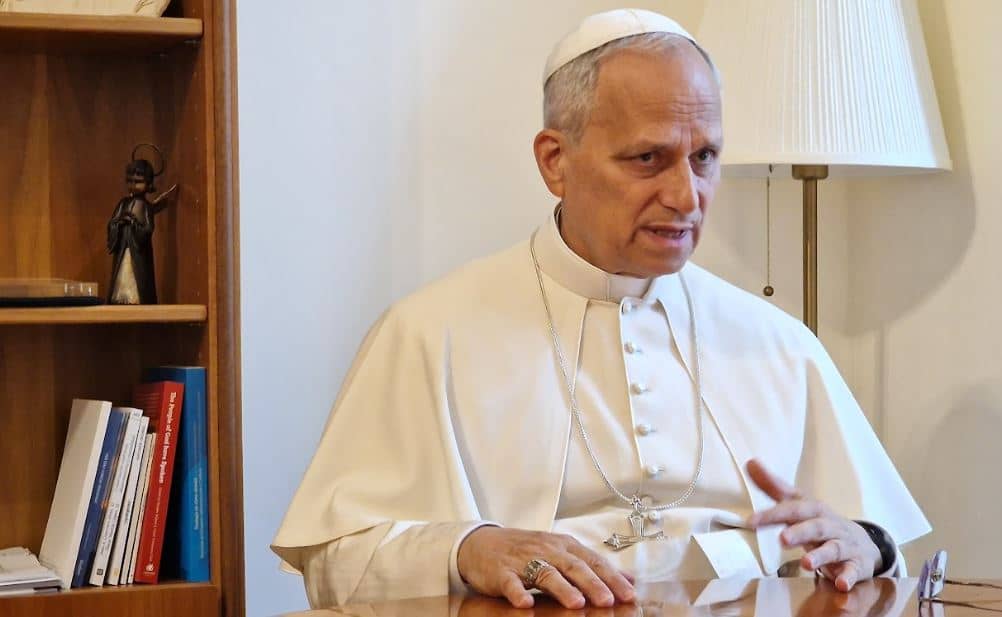YAOUNDÉ, Cameroon – While world attention has been focused on the growing coronavirus pandemic, millions of people continue to suffer due to human trafficking networks.
It is a multi-billion-dollar criminal industry that enslaves an estimated 24.9 million people around the globe.
According to a July 2019 report by Human Rights First, human traffickers earn around $150 billion a year.
One group working tirelessly to stop traffickers and help victims is Talitha Kum – an international network of Catholic religious orders dedicated to stopping modern slavery.
Talitha Kum has recently established itself in Mozambique, a country of origin for many victims of human trafficking, usually destined for South Africa.
The network’s international coordinator, Comboni Sister Gabriella Bottani told Crux that each time she sees a survivor of human trafficking, she knows she is “in the presence of God, in the wounded body of Christ.”
What follows are excerpts of her conversation with Crux.
Crux: In November 2019, a new Talitha Kum Network was created in Mozambique to fight against human trafficking in the Southern African country. How much of a problem is it in the region?
Bottani: The request to organize a Talitha Kum Network in Mozambique came from South Africa, the main destination country of Mozambican girls trafficked for sexual exploitation. The purpose of Talitha Kum is to coordinate the efforts of religious sisters and to train them to identify cases of human trafficking, to organize activities for the prevention of human trafficking and to support survivors in their social rehabilitation and reintegration.
It is very difficult to define the dimension of the crime of trafficking in persons. As in many parts of the world, human trafficking in Mozambique is a hidden crime, underreported.
Who are those involved in trafficking?
Trafficking is a very rentable crime. The chain of traffickers includes the recruiters, the people providing transport and accommodation, the ones who exploits and the clients. The demand led by clients influence the action of traffickers. In Mozambique there is forced child labor which occurs in agriculture, mining, and market vending in rural areas. Why it happens? Who earns from this crime? These are important questions to understand who the people are involved in trafficking. The best way to understand who is involved is to follow the money!
Who are usually the victims?
The majority of trafficked people are women, globally they represent 72 percent of the total. The percentage is more if we consider only human trafficking for sexual exploitation. The main region of recruitment of young girl for sexual exploitation in Mozambique in in the south of the country, close to the capital Maputo. Men and boys are also trafficked to South Africa for forced labor in mines and farms.
In Mozambique there is also a high number of boys who are victims of human trafficking for the purpose of organs removal or body parts. This is believed to be a practice connected with witchcraft.
Also in Mozambique, undocumented migrants are at high risk of being trafficked. Many undocumented migrants smuggled from South Asian and other African countries to South Africa are transported through the country. In the Mozambican ports were also identified South Asian men exploited in slavery-like conditions on vessels for the fishing industry.
What are the routes used by human traffickers?
Mozambican people are trafficked abroad for sexual and labor exploitation. The routes of trafficking follow the migrations routes. People are attracted to a better life: From poor areas to places where there is more possibility of better working conditions, such as big cities, mines, ports and industrial areas. Many migrant workers are attracted by the growing extractive industries in Tete and Cabo Delgado.
Mozambican girls are exploited along the roads from Maputo to Eswatini and South Africa. Child sexual exploitation is growing in the capital, Maputo. The children are recruited in the center and in the north of the country.
Obviously you should have spoken with survivors, in Mozambique or elsewhere. What do they tell you about their experiences?
During the Talitha Kum training in Maputo, the participants had the opportunity to meet a Mozambican girl rescued in South Africa. She had a painful story, she was invited to work in South Africa, and the promise was a good, well-paying job. When she arrived at her destination she was locked in an apartment and forced into prostitution.
They suffer any kind of violence: Psychological, physical, spiritual. They suffer torture, they are raped. The dreams they had of a better life bring them into a nightmare, difficult to understand.
Every time I meet a survivor of trafficking, I know I am in the presence of God, in the wounded body of Christ.
What has the Talitha Kum Network been doing to bring respite to the survivors?
The main activities of the Talitha Kum Networks are based on prevention. Prevention is much more that information and awareness-raising campaigns. Prevention is to find a way to change people’s behavior. Prevention is organized among groups with a high risk of being trafficked, in the rural areas, in refugee camps, in the slums of many cities.
Prevention is done also with the survivors: It includes all the activities connected with social rehabilitation and reintegration of survivors, such as professional training, income generation activities, housing. Talitha Kum Networks provide material, psychosocial, juridical services to survivors.
Talitha Kum is hope! Religious sisters are called by the cry of the victims to stand up. Talitha Kum is an invitation to everybody to stand up for human dignity, for freedom and to overcome indifference and fear: “Together against human trafficking!”
















